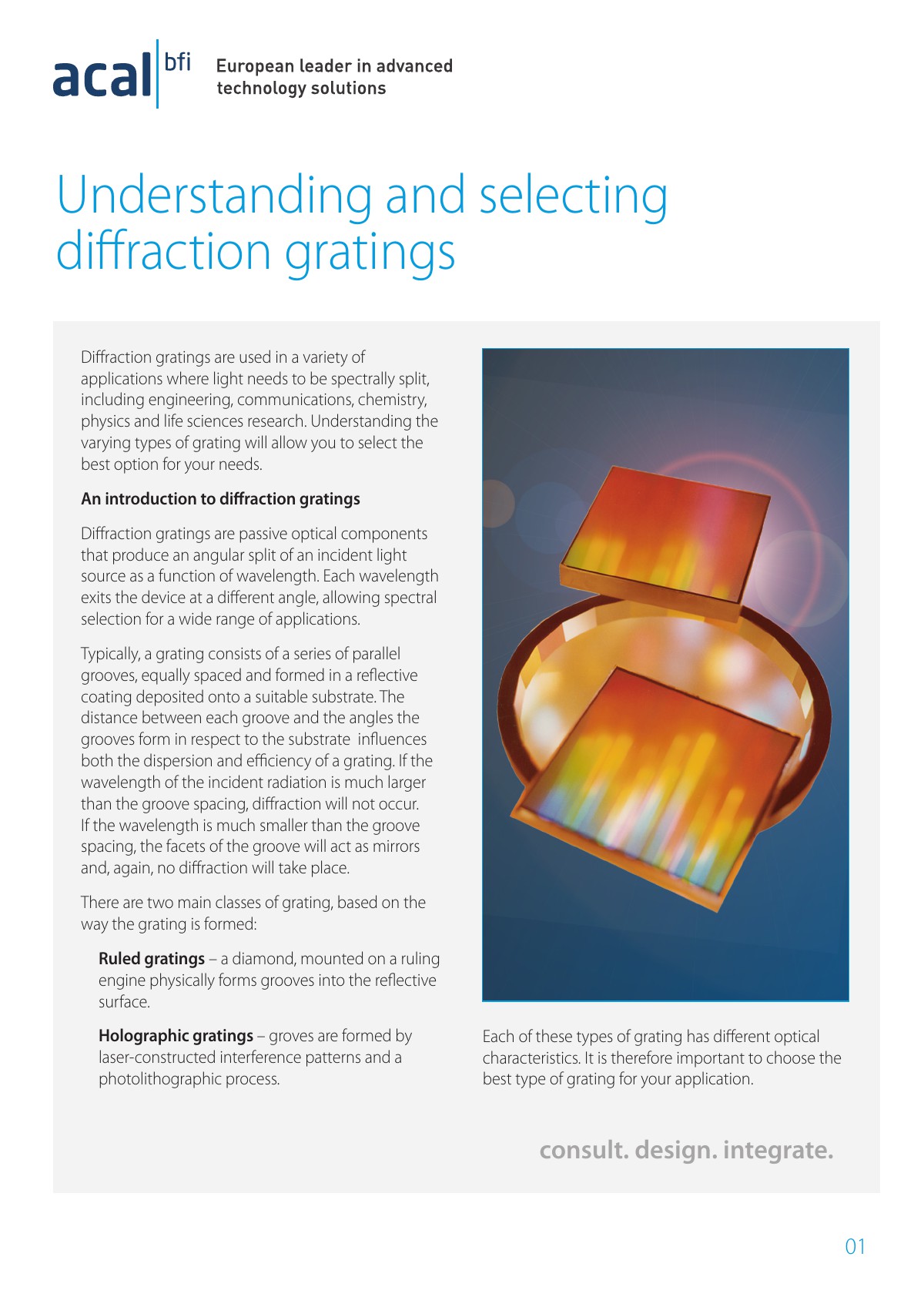Understanding and selecting diffraction gratings
Diffraction gratings are used in a variety of applications where light needs to be spectrally split, including engineering, communications, chemistry, physics, and life sciences research.
Understanding the varying types of gratings will allow you to select the best option for your needs. Diffraction gratings are passive optical components that produce an angular split of an incident light source as a function of wavelength. Each wavelength exits the device at a different angle, allowing spectral selection for a wide range of applications.
Typically, a grating consists of a series of parallel grooves, equally spaced and formed in a reflective coating deposited onto a suitable substrate. The distance between each groove and the angles the grooves form in respect to the substrate influence both the dispersion and efficiency of a grating. If the wavelength of the incident radiation is much larger than the groove spacing, diffraction will not occur. If the wavelength is much smaller than the groove spacing, the facets of the groove will act as mirrors and, again, no diffraction will take place.
Stay informed about innovations and technology
Learn more about how our engineers and supplier partners are working to leverage new innovative technology to solve real-world challenges.
Sign up to receive:
- Product release information
- Regular insights into new technologies
- Invitations to webinars and events
- Whitepapers and case studies
- Tips and tricks from our experts
- Industry news and trends
By subscribing, you’ll gain access to the latest technology highlights and expert advice.
